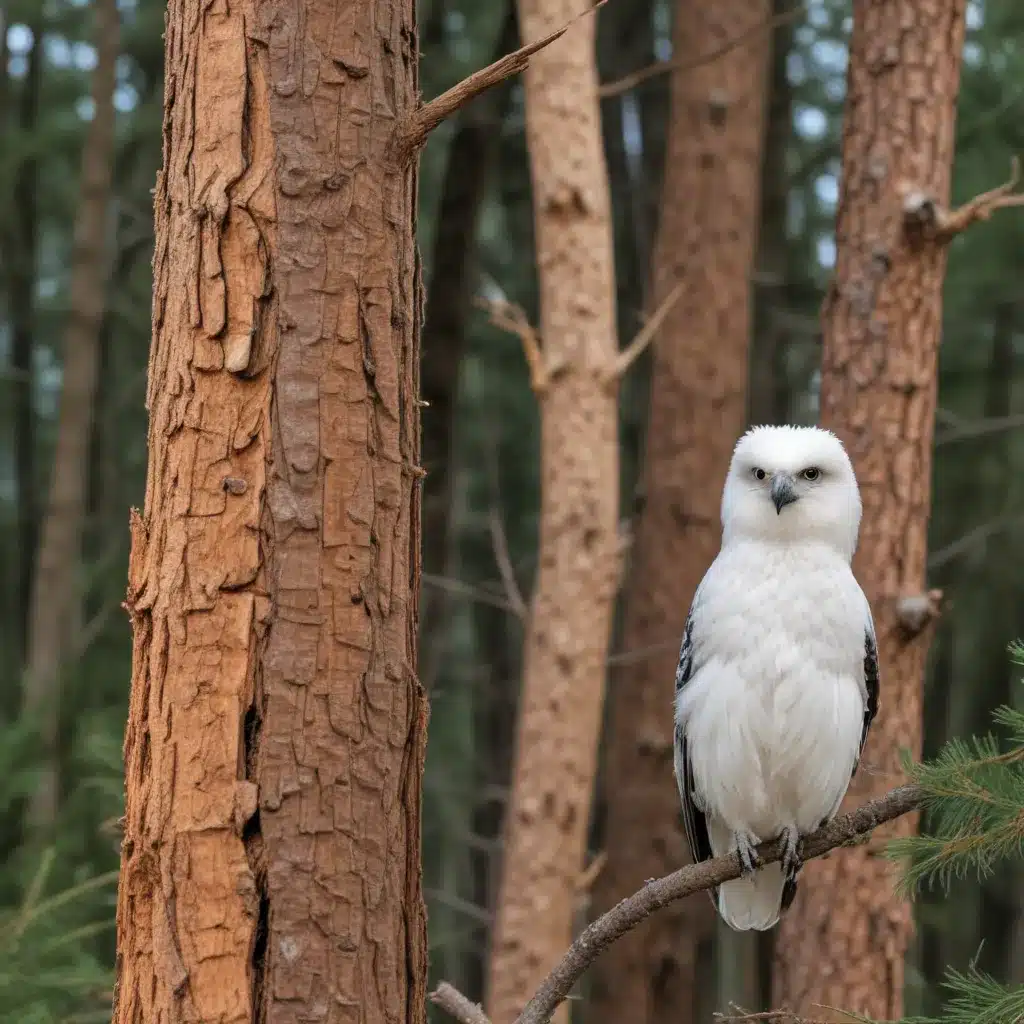
Meet the Feathered Residents of Crooked Pines
Have you ever wondered about the diverse array of birds that call Crooked Pines Farm their home? From majestic hawks soaring overhead to the cheerful song of backyard warblers, our property is teeming with a vibrant community of feathered friends. Join us as we explore the fascinating world of the avian residents at Crooked Pines!
Resident Bird Species
Crooked Pines is home to a wide range of permanent bird species that thrive in our varied habitats. In the dense forest groves, you might spot the reclusive Pileated Woodpecker with its distinctive crimson crest, or hear the loud, cackling call of the Red-bellied Woodpecker as it drums on trees in search of insects. The nearby wetlands and ponds are frequented by the graceful Great Blue Heron, which can be seen stalking through the shallows in search of fish and amphibians.
Our sprawling meadows provide the perfect hunting grounds for the Red-tailed Hawk, whose broad wings and keen eyesight allow it to effortlessly spot and swoop down on small rodents and rabbits. And in the trees surrounding our farmhouse, you’ll likely be serenaded by the melodious trills of the Carolina Wren and the cheerful songs of the Carolina Chickadee.
Migratory Bird Populations
While many of our avian residents remain with us year-round, Crooked Pines also plays host to a diverse array of migratory birds. Each spring and fall, we welcome the return of species like the vibrant Scarlet Tanager, the delicate Wood Thrush, and the eye-catching Indigo Bunting, which use our property as a vital stopover point during their long journeys.
These migratory birds rely on the abundance of native plants, insects, and berries found at Crooked Pines to refuel and rest before continuing on their way. By preserving and enhancing the natural habitats on our farm, we’re able to support these amazing feats of avian migration.
Endangered and Threatened Birds
Sadly, some of the bird species that once thrived at Crooked Pines have now been listed as endangered or threatened due to habitat loss and other environmental pressures. One such bird is the majestic Bald Eagle, which we occasionally spot soaring high above our property. Thanks to conservation efforts, the Bald Eagle has made a remarkable comeback, but it remains a vulnerable species that requires our vigilance and protection.
Another bird of concern is the Cerulean Warbler, a stunning blue songbird that prefers mature, deciduous forests – a habitat that is increasingly threatened by development and deforestation. By maintaining the health and biodiversity of our woodlands, we hope to provide a safe haven for this delicate warbler and other at-risk species.
Ecological Niches of Crooked Pines Avifauna
The birds of Crooked Pines fulfill a wide range of vital ecological roles, each occupying a unique niche within our diverse environment. The insect-eating birds, such as the Eastern Bluebird and the Northern Mockingbird, help to control populations of pests that could otherwise damage our crops and gardens. Meanwhile, the seed-eating sparrows and finches play a crucial role in dispersing the native plants that sustain our ecosystems.
Birds of prey, like the Red-shouldered Hawk and the Barred Owl, serve as natural population regulators, helping to keep the numbers of small mammals and reptiles in check. And the woodpeckers? They’re the unsung heroes of our forests, using their specialized beaks to excavate nesting cavities and expose hidden insects for other species to consume.
Adaptations of Crooked Pines Birds
The birds that thrive at Crooked Pines have evolved an impressive array of adaptations to suit their various lifestyles and environments. The raptors, for instance, possess keen eyesight, sharp talons, and powerful wing muscles that allow them to effortlessly pursue and capture their prey. Meanwhile, the hummingbirds boast the remarkable ability to hover in midair, thanks to their rapid wing-flapping and unique aerodynamic features.
Many of our resident songbirds, such as the Eastern Towhee and the Indigo Bunting, have developed intricate courtship displays and vocalizations to attract mates and defend their territories. And the Belted Kingfisher, with its sturdy bill and diving abilities, is specially equipped to plunge into the water and snatch up fish from our ponds and streams.
Conservation Efforts at Crooked Pines
As stewards of this beautiful property, we at Crooked Pines Farm take our responsibility to the local avifauna very seriously. We actively work to preserve and enhance the diverse habitats that support our feathered friends, from maintaining native plant communities to creating nesting boxes and bird baths to provide vital resources.
We also participate in citizen science initiatives, such as the annual Christmas Bird Count and the Breeding Bird Survey, to help monitor the health and population trends of our resident and migratory birds. By sharing our observations and data with conservation organizations, we hope to contribute to the broader understanding and protection of these remarkable creatures.
In addition, we strive to educate our visitors, especially the young ones, about the importance of birds in our ecosystem and the simple ways they can help support avian conservation. From guided nature walks to hands-on activities, we’re committed to inspiring the next generation of bird enthusiasts and environmental stewards.
So the next time you visit Crooked Pines Farm, be sure to look up, listen closely, and marvel at the vibrant tapestry of avian life that graces our property. These feathered residents are a true testament to the abundance and diversity of nature – and we’re honored to be their caretakers.


